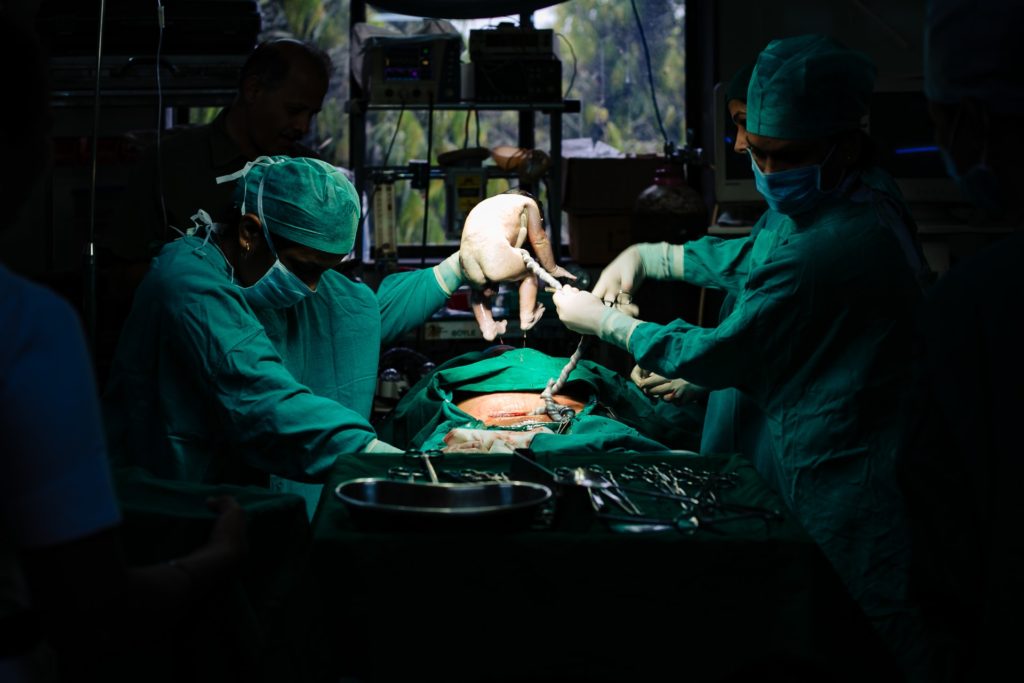Belgium is seeing steadily fewer births, but the proportion of those births that take place with a caesarian section is increasing to such an extent it now exceeds the recommended limit set by the World Health Organisation.
That is the conclusion drawn by federal member of parliament Nathalie Muylle (CD&V) on the basis of figures she collected herself.
A caesarean section (or C-section) involves a surgical intervention in the delivery of a baby, when for a number of reasons a normal delivery via the vagina is not safe, so an incision is made through the abdomen and into the uterus to release the baby that way.
The operation carries with it several dangers, including those common to every surgical procedure: long recovery time, scarring, risk of infection. In most cases, the woman will require a C-section for each subsequent pregnancy.
In addition, the procedure is considered less than optimum for psychological reasons, as the bonding between mother and baby in the moments following birth is considered important for the health of both.
In 2016, the federal knowledge centre for health care (KCE) reported that C-sections made up 21% of all births, with some hospitals reporting 33%. In most cases, those operations were carried out for essential medical reasons.
However, there are women who, for whatever reason, request a C-section when one may not be necessary for medical reasons. For those cases, where the risks are not balanced by the dangers, the KCE drew several conclusions.
“The newborn is at an increased risk of breathing problems, especially if the Caesarean section is performed before the 39th week of pregnancy. In addition, in subsequent pregnancies there is an increased risk of placental attachment abnormalities and uterine rupture during delivery,” the centre warned.
“This risk increases significantly after any caesarean section, especially if labour is induced with prostaglandins. Performing a Caesarean section on a future mother who wishes to have other children at a later date is not a harmless procedure. The future parents must therefore be well informed.”
Since then the proportion of C-sections has continued to grow. Where in 2014 they accounted for 20.64% of all births, the number by 2019 had gone up to 21.04%.
The WHO, meanwhile, recommends a limit of 10-15%.
The procedure, Muylle said, “remains a surgical procedure that can only be performed when there is a medical need and not because it can be planned and prepared in advance,” she said.
“Objective information about the advantages and disadvantages to young mothers is crucial here.”

